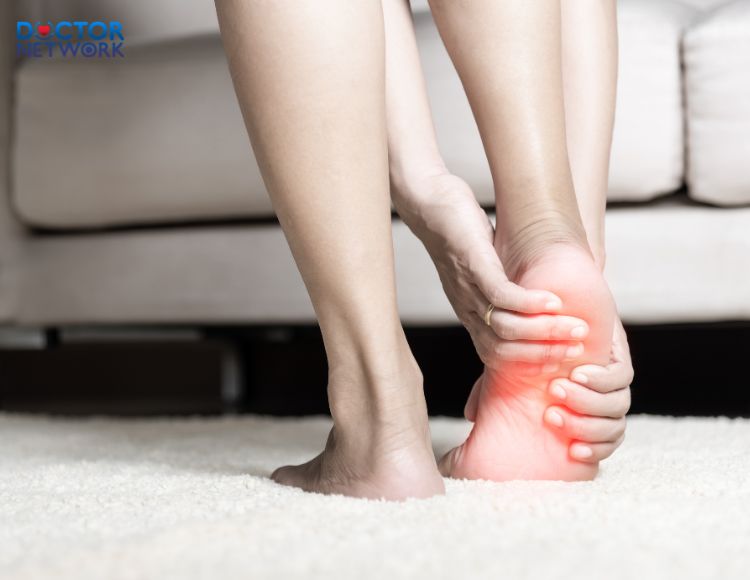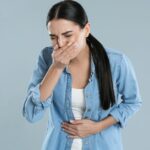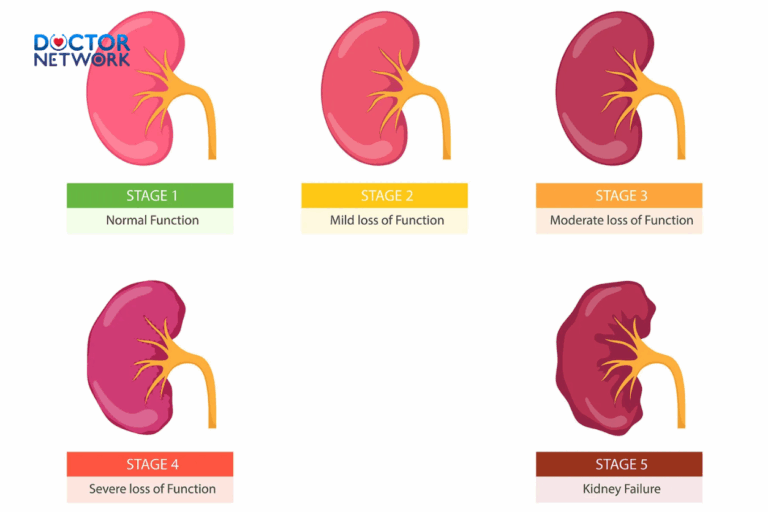Heel pain, a common ailment affecting millions worldwide, can significantly impact daily life and mobility. This discomfort, often stemming from conditions like plantar fasciitis or Achilles tendinitis, has led many to seek relief through time-honored folk remedies. These traditional treatments, passed down through generations, offer natural alternatives to conventional medicine. In this comprehensive guide, we’ll explore the causes of heel pain, “folk remedies for heel pain“, and discuss their effectiveness and safety. We’ll also examine how these remedies can complement modern medical approaches, providing you with a well-rounded understanding of heel pain management.
Understanding Heel Pain: The Root of Discomfort
What is Heel Pain?
Heel pain manifests as discomfort in the heel area, often most noticeable when taking the first steps in the morning or after periods of rest. This sensation can range from a dull ache to a sharp, stabbing pain, significantly impacting one’s quality of life.

Heel pain is not just a simple symptom but also a sign of many different health problems
Common Causes of Heel Pain
Several conditions can trigger heel pain, with the most prevalent being:
- Plantar Fasciitis: Inflammation of the plantar fascia, a thick band of tissue connecting the heel bone to the toes.
- Heel Spurs: Bony protrusions on the underside of the heel bone.
- Achilles Tendinitis: Inflammation of the Achilles tendon, which connects the calf muscles to the heel bone.
Risk Factors for Heel Pain
Understanding the risk factors can help in prevention and management of heel pain:
| Risk Factor | Description |
|---|---|
| Age | Increased risk after 40 due to reduced tissue elasticity |
| Weight | Excess body weight puts additional stress on the heel |
| Occupation | Jobs requiring prolonged standing or walking |
| Medical Conditions | Diabetes and certain types of arthritis can contribute |
When to See a Doctor
While many cases of heel pain can be managed at home, certain symptoms warrant professional medical attention:
- Pain persists for several weeks despite home treatment
- Severe pain or swelling
- Inability to bend your foot downward or walk normally
- Heel pain accompanied by fever, numbness, or tingling
Exploring folk remedies for heel pain: Nature’s Solutions
The Science Behind Folk Remedies
Folk remedies for heel pain often leverage natural anti-inflammatory properties and pain relief mechanisms. Many traditional treatments contain compounds that can reduce swelling and alleviate discomfort, mirroring the effects of modern pharmaceuticals but often with fewer side effects.
Popular Folk Remedies for Heel Pain
- Warm Baths and Soaks
- Epsom salt baths: Rich in magnesium, known for its anti-inflammatory properties
- Apple cider vinegar soaks: May help balance pH and reduce inflammation
- Herbal Remedies
- Ginger: Contains gingerols, powerful anti-inflammatory compounds
- Turmeric: Curcumin in turmeric has potent anti-inflammatory effects
- Arnica: Often used topically to reduce pain and swelling
- Essential Oils
- Peppermint oil: Provides a cooling sensation and may reduce pain
- Lavender oil: Known for its calming and pain-relieving properties
- Tea tree oil: Has anti-inflammatory and analgesic effects
DIY Treatment Options
Empowering yourself with home-based treatments can provide immediate relief:
- Foot Massage Techniques
- Use a tennis ball or frozen water bottle to roll under the foot
- Apply firm pressure to trigger points on the heel and arch
- Stretching Exercises
- Calf stretches: Stand facing a wall, lean forward with one leg behind
- Plantar fascia stretches: Sit down, cross one leg over the other, pull toes back
- Home Remedies for Pain Relief
- Ice packs: Apply for 15-20 minutes every 2-3 hours
- Compression wraps: Provide support and reduce swelling
Effectiveness and Safety of Folk Remedies: Balancing Tradition and Science
Evidence-Based Research on Folk Remedies
While anecdotal evidence supports many folk remedies, scientific studies are limited. However, some treatments have shown promise:
| Remedy | Research Findings |
|---|---|
| Ginger | May reduce inflammation and pain in osteoarthritis |
| Turmeric | Curcumin shows anti-inflammatory effects in clinical trials |
| Epsom Salt | Mixed evidence, but may help reduce swelling |
Hot salt compress helps stimulate blood circulation and relieve pain
Potential Risks and Side Effects
While generally safe, folk remedies can carry risks:
- Allergic reactions to herbal ingredients or essential oils
- Skin irritation from topical applications
- Interactions with existing medications
Always perform a patch test before applying new remedies and consult with a healthcare provider, especially if you have underlying health conditions.
When Folk Remedies May Not Be Enough
Persistent or severe heel pain may require more advanced treatment. Consider seeking professional help if:
- Pain interferes with daily activities for more than a few weeks
- You experience numbness, tingling, or fever along with heel pain
- You have diabetes or poor circulation
Combining Folk Remedies with Conventional Treatment: A Holistic Approach
Working With Your Doctor
Open communication with your healthcare provider is crucial. Discuss any folk remedies you’re using or considering to ensure they complement your overall treatment plan.
Lifestyle Modifications
Addressing underlying factors can enhance the effectiveness of both folk and conventional treatments:
- Weight management: Reducing excess body weight can significantly decrease pressure on the heels
- Footwear adjustments: Choose shoes with proper arch support and cushioning
- Activity modification: Balance rest and activity to avoid overexertion
Physical Therapy Exercises
A physical therapist can provide targeted exercises to strengthen the muscles supporting your heel and improve flexibility.
Medications
In some cases, over-the-counter or prescription medications may be necessary:
- NSAIDs (e.g., ibuprofen) for pain and inflammation
- Corticosteroid injections for severe cases
Prevention of Heel Pain: Proactive Measures for Long-Term Comfort
Preventing heel pain is often easier than treating it. Incorporate these strategies into your daily routine:
- Proper Footwear and Support
- Choose shoes with good arch support and shock absorption
- Replace athletic shoes regularly, especially if you’re a runner
- Regular Stretching and Exercise
- Incorporate foot and calf stretches into your daily routine
- Gradually increase the intensity of your workouts to avoid overexertion
- Maintaining a Healthy Weight
- Follow a balanced diet rich in anti-inflammatory foods
- Engage in regular low-impact exercises like swimming or cycling

Vitamin D supplementation helps improve pain
- Addressing Underlying Medical Conditions
- Manage conditions like diabetes or arthritis that can contribute to heel pain
- Regular check-ups with your doctor can help catch potential issues early
Disclaimer: Your Health Comes First
While this guide provides comprehensive information on folk remedies for heel pain, it’s crucial to remember:
- This information is not a substitute for professional medical advice
- Always consult a doctor for proper diagnosis and treatment
- Follow safety guidelines when using any remedies, folk or conventional
By combining the wisdom of traditional remedies with modern medical knowledge, you can develop a well-rounded approach to managing heel pain. Remember, every individual is unique, and what works for one person may not work for another. Listen to your body, be patient with the healing process, and don’t hesitate to seek professional help when needed.
5 frequently asked questions related to folk remedies for heel pain
What is the most effective folk remedy for heel pain?
While effectiveness can vary from person to person, one of the most popular and potentially effective folk remedies for heel pain is the Epsom salt (magnesium sulfate) soak. Epsom salt is known for its anti-inflammatory properties and ability to reduce swelling. To use this remedy, dissolve 1/2 cup of Epsom salt in a basin of warm water and soak your feet for 15-20 minutes. This can help relieve pain associated with conditions like plantar fasciitis and heel spurs. Another widely used remedy is ginger (Zingiber officinale) compress, which contains gingerols that have potent anti-inflammatory effects.
Are there any risks associated with using folk remedies for heel pain?
While many folk remedies are generally safe, there are potential risks to consider. Some herbal remedies like arnica (Arnica montana) or essential oils like peppermint (Mentha piperita) can cause skin irritation or allergic reactions in some people. It’s important to do a patch test before applying any new topical remedy. Additionally, some herbs can interact with medications. For example, turmeric (Curcuma longa), often used for its anti-inflammatory properties, can interact with blood thinners. Always consult with a healthcare provider before starting any new treatment, especially if you have underlying health conditions or are taking medications.
How long does it typically take for folk remedies to relieve heel pain?
The time frame for relief can vary depending on the severity of the condition and the specific remedy used. For minor cases of heel pain, some people report feeling relief after a few days of consistent use of folk remedies. For example, regular use of a tennis ball or frozen water bottle to massage the plantar fascia might provide some relief within a week. However, for more severe cases or chronic conditions like plantar fasciitis, it may take several weeks or even months to see significant improvement. It’s important to be patient and consistent with the treatments. If pain persists or worsens after 2-3 weeks of home treatment, it’s advisable to consult a podiatrist or orthopedic specialist.
Can folk remedies be used alongside conventional medical treatments for heel pain?
In many cases, folk remedies can be used as complementary treatments alongside conventional medical approaches. For instance, you might combine over-the-counter non-steroidal anti-inflammatory drugs (NSAIDs) with natural anti-inflammatory remedies like turmeric or ginger tea. Similarly, stretching exercises recommended by a physical therapist can be done in conjunction with folk remedies like warm Epsom salt soaks. However, it’s crucial to inform your healthcare provider about any folk remedies you’re using to ensure they don’t interfere with prescribed treatments. For example, if you’re receiving corticosteroid injections for severe plantar fasciitis, certain herbal remedies might need to be avoided.
What dietary changes can help support folk remedies for heel pain?
Dietary changes can indeed support the effectiveness of folk remedies for heel pain. An anti-inflammatory diet rich in omega-3 fatty acids, found in foods like salmon, chia seeds, and walnuts, can help reduce overall inflammation in the body. Including foods high in magnesium, such as spinach, almonds, and avocados, can support muscle and nerve function. Turmeric, often used in folk medicine for its anti-inflammatory properties, can be incorporated into your diet through golden milk or as a spice in cooking. Additionally, staying well-hydrated helps maintain the elasticity of the plantar fascia. Some people find that reducing their intake of nightshade vegetables (like tomatoes and peppers) helps with inflammation-related pain, although scientific evidence for this is limited. As with any significant dietary change, it’s wise to consult with a nutritionist or your healthcare provider, especially if you have conditions like diabetes that can affect heel health.
Scientific Evidence
- “Effectiveness of salt bath therapy for heel pain due to plantar fasciitis”: This study was conducted by a research team at Hanoi Medical University, published in the Vietnam Medical Journal in 2018. The study showed that soaking feet in warm salt water can significantly reduce pain and improve foot function in patients with plantar fasciitis.
- “Effect of ginger extract in the treatment of osteoarthritis pain”: This is a systematic review study published in the Osteoarthritis and Cartilage Journal in 2015. Although not specifically focused on heel pain, this study provides evidence for the anti-inflammatory and analgesic effects of ginger, a common ingredient in folk remedies for heel pain.
The above article has provided information about “folk remedies for heel pain” and related knowledge. Hope the article will be useful to you.
Referecnes:
Natural Remedies for Heel Pain-Get Back to Your Feet Without Drugslondonfootandanklesurgery.co·3
Kiểm Duyệt Nội Dung
More than 10 years of marketing communications experience in the medical and health field.
Successfully deployed marketing communication activities, content development and social networking channels for hospital partners, clinics, doctors and medical professionals across the country.
More than 6 years of experience in organizing and producing leading prestigious medical programs in Vietnam, in collaboration with Ho Chi Minh City Television (HTV). Typical programs include Nhật Ký Blouse Trắng, Bác Sĩ Nói Gì, Alo Bác Sĩ Nghe, Nhật Ký Hạnh Phúc, Vui Khỏe Cùng Con, Bác Sỹ Mẹ, v.v.
Comprehensive cooperation with hundreds of hospitals and clinics, thousands of doctors and medical experts to join hands in building a medical content and service platform on the Doctor Network application.



























